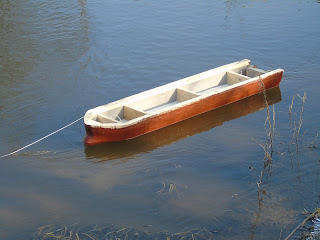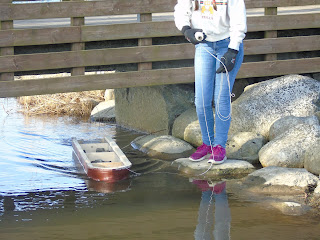To get the real vagabond feeling the vessel must have some sea ability in order to sail along the coast, at least when the weather is optimal. That rules out many of the catamaran constructions with a tiny house balancing on top, which are quite popular. It must be more a barge type of hull and narrow enough for rivers and slusses.
The typical British narrow boats are only about 2 meters wide to pass the narrowest canals and slusses. Most other countries in Europe have broader waterways, so I think a width about a railway compartment will be more comfortable for permanent living.
Boat hulls of ferrocement are strong, low maintenance, but also heavy. My idea is a combination of plaster, stonewool and armoured cement in the bottom. I am not aware that this has been tried before. Therefore I have to test it out in small scale to save costs.
Stonewool is fire resistant, insulating and non water absorbing. All of which is desired in a floating home.
My first idea was to cast the hull in a form. This is my first prototype :
But I realised that this construction is both heavy and quite difficult to make without the use of heavy machines. Therefore I came up with a new idea; to do this more like the way you construct a sort of tiny house. By craftsmanship . The hull can be constructed as a floating floor construction, only that it doesn't float on the ground, but on water. Therefore the stabilizing stiffness has to be the boat side of the hull, the inside!
The hull is cut from Rockwool clad with glass fibre armoured plaster. It turned out to be impressively light and solid. I even lost it on the ground without harming the shell, but to make the bottom even harder I made the bottom with double thickness. The dolphin nose is to break the bow wave so it will glide more quiet in the water.
The sides made from some leftover wood and plexiglass I have used on a glazed terrace for my house. This served as frame for the Rockwool. The hull was then ready for a new turn with plaster. Both bottom and sides.
This is a downscaled model and it serves primarily to test the function of the material, but under way I try to think which building materials will be possible for a full scale model and how it can be built to withstand the forces of solid water rather than wind and rain which is the forces those materials are meant to withstand .
The hull is given a layer of paint too seal the plaster before it is fully hardened . It will now be allowed some days for hardening before testing it in the tub.
First test, February, 20th
My tub, it turned out, wasn't big enough so I found a park pond for the test:
It floated higher than I expected, so I picked some rocks to fill into it .
It still kept stable, but as the last picture shows it picks up too much waves at the shoulders and it also seems as there could be made some improvements to the aft to release water more smoothly. After all, waves are energy consuming and also disturbs the environment. Minimizing waves is worth some more trials.
2nd test Float home model Press the link to see




















